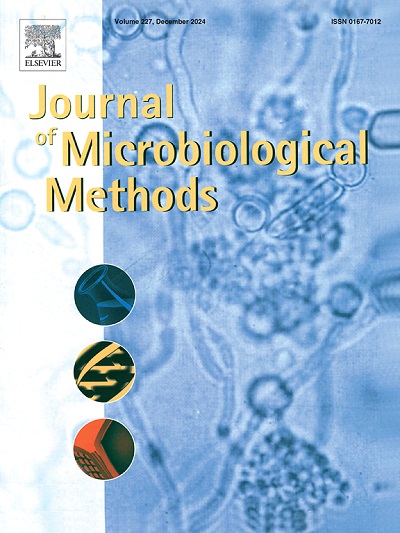Classifying fungi biodiversity using hybrid transformer models
IF 1.9
4区 生物学
Q4 BIOCHEMICAL RESEARCH METHODS
引用次数: 0
Abstract
Fungi are essential members of ecosystems, playing key roles in nutrient cycling, agriculture, and medicine. Their classification into proper species helps us to understand their biodiversity, allowing us to leverage their ecological and practical benefits. A new hybrid deep learning-based technique has been proposed, merging the Vision Transformer and Swin Transformer models with transfer learning frameworks like MobileNetV2, DenseNet121, and EfficientNetB0 for Fungi multiclass classification. This study utilized a publicly available dataset containing 9115 images of five fungal species from UC Irvine Machine Learning Repository. To address significant class imbalance, several data augmentation techniques were employed. The results showed that the Swin Transformer combined with DenseNet121 achieved the highest classification accuracy of 96.96 % for training, 95.97 % for validation, and 95.57 % for testing, while other models like ViT-DenseNet121 and Swin-MobileNetV2 also delivered competitive results. Using confusion matrices and benchmark classification metrics, and paired statistical testing, the analysis highlights the models' ability to generalize effectively and minimize misclassifications. To further ensure the robustness of the findings, a five-fold cross-validation was performed across all hybrid models. Additionally, explainable AI techniques, specifically Grad-CAM visualizations, were employed to interpret the model's focus areas, confirming attention to biologically significant structures. This research demonstrates a balance between modeling local features and capturing global context. Indeed, these hybrid models prove to be scalable and efficient for complex biological datasets. This interdisciplinary study bridges ecology and advanced technology by applying deep learning to enhance fungal classification. This study aims to improve the management and understanding of fungal biodiversity for the promotion of conservational and sustainable practices for the betterment of our ecosystem. The findings have significant applications, including sustainable agriculture through early detection of fungal plant pathogens, improved medical diagnostics for fungal infections, and biodiversity conservation through precise species monitoring.

基于混合变压器模型的真菌生物多样性分类。
真菌是生态系统的重要成员,在养分循环、农业和医学中发挥着关键作用。将它们分类为适当的物种有助于我们了解它们的生物多样性,使我们能够利用它们的生态和实际效益。提出了一种新的基于深度学习的混合技术,将Vision Transformer和Swin Transformer模型与迁移学习框架(如MobileNetV2, DenseNet121和EfficientNetB0)合并在一起,用于真菌多类分类。本研究利用了一个公开可用的数据集,其中包含来自加州大学欧文分校机器学习库的9115张五种真菌的图像。为了解决显著的类不平衡,采用了几种数据增强技术。结果表明,Swin Transformer结合DenseNet121的分类准确率最高,训练准确率为96.96 %,验证准确率为95.97 %,测试准确率为95.57 %,而其他模型如viti -DenseNet121和Swin- mobilenetv2也取得了竞争结果。使用混淆矩阵和基准分类指标,以及配对统计检验,分析突出了模型有效泛化和最小化错误分类的能力。为了进一步确保研究结果的稳健性,对所有混合模型进行了五倍交叉验证。此外,可解释的人工智能技术,特别是Grad-CAM可视化,被用来解释模型的重点区域,确认对生物重要结构的关注。这项研究展示了局部特征建模和捕获全局上下文之间的平衡。事实上,这些混合模型对于复杂的生物数据集是可扩展和有效的。这项跨学科的研究通过应用深度学习来增强真菌分类,将生态学和先进技术联系起来。本研究旨在提高对真菌生物多样性的管理和认识,以促进保护和可持续的做法,改善我们的生态系统。这些发现具有重要的应用价值,包括通过早期发现真菌植物病原体来实现可持续农业,改进真菌感染的医学诊断,以及通过精确的物种监测来保护生物多样性。
本文章由计算机程序翻译,如有差异,请以英文原文为准。
求助全文
约1分钟内获得全文
求助全文
来源期刊

Journal of microbiological methods
生物-生化研究方法
CiteScore
4.30
自引率
4.50%
发文量
151
审稿时长
29 days
期刊介绍:
The Journal of Microbiological Methods publishes scholarly and original articles, notes and review articles. These articles must include novel and/or state-of-the-art methods, or significant improvements to existing methods. Novel and innovative applications of current methods that are validated and useful will also be published. JMM strives for scholarship, innovation and excellence. This demands scientific rigour, the best available methods and technologies, correctly replicated experiments/tests, the inclusion of proper controls, calibrations, and the correct statistical analysis. The presentation of the data must support the interpretation of the method/approach.
All aspects of microbiology are covered, except virology. These include agricultural microbiology, applied and environmental microbiology, bioassays, bioinformatics, biotechnology, biochemical microbiology, clinical microbiology, diagnostics, food monitoring and quality control microbiology, microbial genetics and genomics, geomicrobiology, microbiome methods regardless of habitat, high through-put sequencing methods and analysis, microbial pathogenesis and host responses, metabolomics, metagenomics, metaproteomics, microbial ecology and diversity, microbial physiology, microbial ultra-structure, microscopic and imaging methods, molecular microbiology, mycology, novel mathematical microbiology and modelling, parasitology, plant-microbe interactions, protein markers/profiles, proteomics, pyrosequencing, public health microbiology, radioisotopes applied to microbiology, robotics applied to microbiological methods,rumen microbiology, microbiological methods for space missions and extreme environments, sampling methods and samplers, soil and sediment microbiology, transcriptomics, veterinary microbiology, sero-diagnostics and typing/identification.
 求助内容:
求助内容: 应助结果提醒方式:
应助结果提醒方式:


